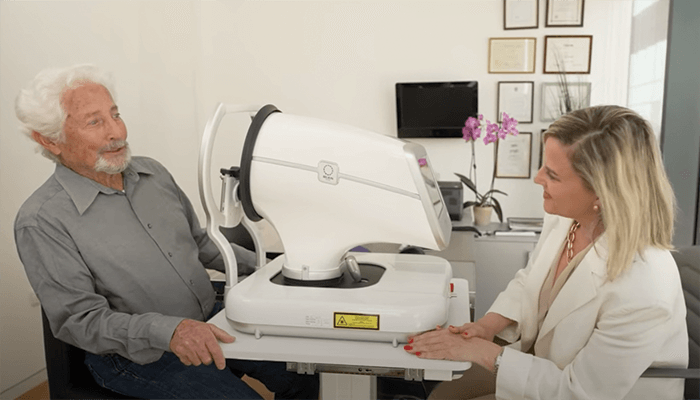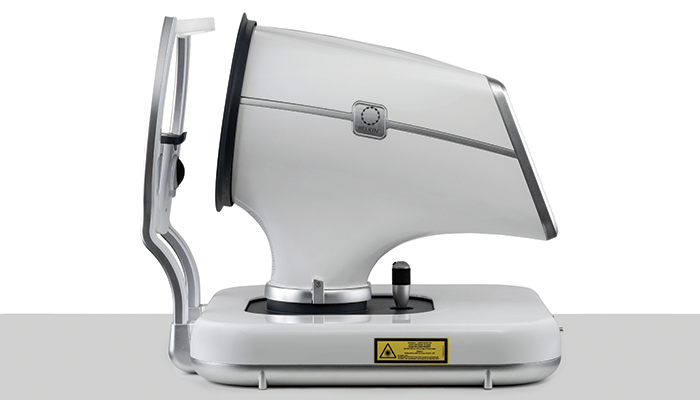
Ophthalmologists are aware of the challenges facing glaucoma management, particularly regarding patient compliance. In our clinic at the University of Heidelberg, we see patients at various stages of glaucoma development – from undiagnosed to early onset and post-operative. These long-term patients often have issues with adherence. No matter how specific the instructions given when prescribing eye drops, a large percentage of glaucoma patients will not take them correctly (1, 2). Though it is understandable that patients sometimes forget to instil their drops, maintaining compliance when treating a lifelong disease like glaucoma is crucial.
Managing patients with poor adherence
When patients return to the clinic, it is important not to rely on pressure measurements, as sometimes patients forget their drops, only remembering to take them before their next appointment to lower the pressure – behaviour known as “white coat adherence.”
Neglecting eye drops can cause irreversible damage in one to two years, and, when a patient is not in a position to understand this damage, it is better to recommend other treatment options. In most of these cases, patients are given a time frame of between one and five months to improve their compliance. If it is clear that they have not been adhering to their medication over multiple visits, it becomes necessary to tell them that they must undergo a different procedure to lower the pressure. As a doctor, it is important to differentiate between patient profiles and observe how they react; depending on the patient, you may need to make it clear that there is no way for them to continue without intervention.
At this point, the language used to counsel the patient becomes of crucial importance. Many patients can be persuaded to undergo a “treatment” or a “procedure,” if they understand that it will reduce the need for eye drops. However, there will always be patients who are afraid to undergo “surgery.” Patients who have done their research will further understand that glaucoma surgery is not like cataract surgery, where the results are more instant. There will be hospital time, significant healing time involved to realize the results, and a chance of side effects, such as hypertonia or some blood in the eye. Ultimately, the more invasive the recommended intervention is perceived to be by patients, the more reluctant they will be – and that’s why less invasive procedures have higher patient acceptance.

Enter DSLT?
As glaucoma is a lifelong disease, we need diverse ways of managing glaucoma patients in the long term. Though treatment may commence with eye drops, the lack of compliance can lead to the need for even more eye drops – but that only highlights the imperfect nature of the treatment. The idea of a simple, non-invasive procedure with nearly instant impact and a high likelihood of reducing the need for eye drops is extremely appealing to me and other doctors – especially when compared with the alternatives: more drops or invasive surgery. Direct selective laser trabeculoplasty (DSLT) could fill a real gap.
DSLT represents a gentler, non-contact primary treatment therapy for open-angle glaucoma patients which, in initial studies, appeared to be as effective as selective laser trabeculoplasty (SLT), while still being a rapid, non-contact, and automated treatment (3). With the impending release of the results of the GLAUrious randomized control trial (4), we expect to see clinical results to support this conclusion.
This procedure is straightforward to perform, with a touch of a single button, and does not exclude the possibility for further surgeries, if necessary. In healthcare systems like Germany’s, DSLT could provide a new early intervention option and even first-line treatment in glaucoma management. In other countries, where patients cannot afford eye drops and have little access to follow-up visits, this type of automated procedure, without the need for significant resources or a surgical theater, could also be valuable. There are, in fact, many scenarios in which this treatment would be appealing.
In our own clinic, integrating this methodology as a routine application would be fairly simple as we have already begun to move away from “last-resort” type surgeries, such as trabeculectomy, towards a mixed treatment approach, including SLT and the PRESERFLO MicroShunt (Santen). And that is thanks to our strategy of detecting and treating glaucoma patients much earlier. Thus, for a certain group of patients, DSLT can certainly be implemented as a first-line treatment option, before or instead of prescribing drops.
What makes the promise of DSLT even more interesting is the rapid treatment time and elimination of a gonio lens; patients will not have to endure an uncomfortable procedure, and ophthalmologists and their teams will experience greater efficiency in the clinic.

References
- AL Robin, KW Muir, “Medication adherence in patients with ocular hypertension or glaucoma,” Expert Rev Ophthalmol, 14, 199 (2019). DOI: 10.1080/17469899.2019.1635456.
- A Robin, DS Grover, “Compliance and adherence in glaucoma management,” Indian J Ophthalmol, 59, S93 (2011). PMID: 21150041.
- ZS Sacks et al., “Non-contact direct selective laser trabeculoplasty: light propagation analysis,” Biomed Opt Express, 11, 2889 (2020). PMID 32637231.
- N Congdon et al., “Direct selective laser trabeculoplasty in open angle glaucoma study design: a multicentre, randomised, controlled, investigator-masked trial (GLAUrious),” Br J Ophthalmol, [Online ahead of print] (2021). PMID: 34433548.
